
 |
|
|
|
It's marvelous that special effects maestro Ray Harryhausen's later years were spent as the focus of so much praise and attention. Beyond certain Hollywood technical circles, the fans probably discovered Ray when Famous Monsters of Filmland began promoting his talents in its pages in the late 1950s. The 7th Voyage of Sinbad had us all looking for the Harryhausen credit, which by the time of Jason and the Argonauts would inspire scattered applause from matinee fans already clued-in to the animator's genius. Ray's fame really didn't go mainstream until the 1970s, however, when a new generation of fantasy-starved kids discovered the stop-motion marvels of his second and third Sinbad adventures. After the unexpected failure of The Valley of Gwangi, Harryhausen and Schneer retrenched with the tried & true Arabian Nights adventure formula. The press was suddenly aware of Harryhausen as well, which finally put an end to clueless reviews dismissing his special effects as (no kidding) third-rate. Industry indicators in 1958 had advised that another Arabian Nights adventure wouldn't do well. The subgenre had subsided several years earlier when Howard Hughes released Son of Sinbad, which turned out to be little more than a parade of the mogul's stable of starlets. Harryhausen's 7th Voyage startled audiences with monsters of a sort they'd never seen before, in breathtaking color. It made an impact almost as great as had King Kong twenty-five years before, and proved to be a hard act to follow.
|
|
The Golden Voyage of Sinbad finds Ray Harryhausen retrenching in more ways than one. A return to Sinbad can't have been painful, as he loved fantasy tales as much as dinosaurs. But the movies had changed in tone, and even children's fare now had an element of sex, namely Caroline Munro's concubine with the low-cut harem outfit. Co-screenwriter Brian Clemens helped to assemble a 'collect the puzzle pieces' storyline that left open slots for Harryhausen's special effects exercises. The picture is packed with magical incident yet lacks urgency. We really don't care about the restoration of a king with a curse (Douglas Wilmer). More interesting is Tom Baker's villain Koura, who has often been singled out as a Harryhausen substitute: the sorcerer Koura animates and controls various demons and monsters through a mental concentration that saps his energy and prematurely ages him. 
Nobody thought to hand out acting awards to John Philip Law, yet he makes a workably laid-back Sinbad. Law's sailor takes the mission seriously, turns his back on monetary rewards and tries not to sweat the small stuff. In an effort to be hip the show has mild drug humor (a dissipated merchant's son Kurt Christian is sent on the voyage to be straightened out), and even milder sex references. Munro's Margiana looks like a sex slave but behaves in a completely modest manner. With few exceptions, she's there mainly to look shocked or amazed in cutaways from Harryhausen's effects, and to be carried off by a cyclopean Centaur. With one exception the movie's monster creations seem like retreads of earlier Harryhausen efforts, which, if you set the dinosaurs aside, were mostly original concepts. The wooden masthead that comes to life reminds us of Talos, who was also a statue. The flying homunculus demons are literally Harryhausen's Ymir, even to the point of recycling the Venusian critter's 'performance' as he comes to life. The Centaur and the Griffin seem to be unlikely creatures, and when they get together they simply go through the motions of yet another two-legged creature battling a four-legged one (Gwangi vs Styracosaurus, Ymir vs Elephant, etc.). The fantastic monsters are compartmentalized in their sequences -- we never have the feeling of trepidation, knowing that a fierce 7th Voyage Cyclops might attack at any moment. 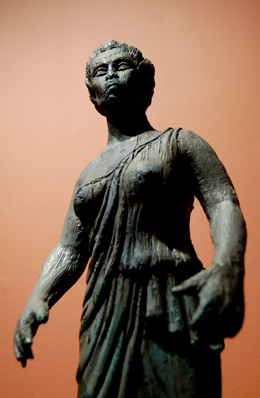
Bringing Golden Voyage to life and making it worth all the bother is Harryhausen's one truly novel creation, the six-armed Kali statue that does battle for Koura. Harryhausen put all of his effort into this one. The statue performs an impressive Indian dance, and then sprouts six swords for the fight. Unlike some of the other monster scenes, Harryhausen covers the Kali action from enough angles to make us forget for a moment about the effects techniques. It's an exciting fight, greatly enhanced by Miklós Rózsa's action music. It's possible that Harryhausen had Miklós Rózsa in mind back for 7th Voyage, as the famous composer had provided much of the storybook grandeur for the Korda's The Thief of Bagdad which so clearly inspired the animator. Rózsa's contribution here makes even more of a difference, pounding a tone of classic fantasy into a show from the fantasy wasteland of the early 1970s. Unfortunately, Golden's story requires at least twenty grandiose settings, with enormous structures and temples. Harryhausen and cinematographer Ted Moore's execution of these 'epic' scenes is at best hit and miss. A few mattes are almost undetectable, but we also have a dull shot of Sinbad's boat, clearly up out of the water, with what looks like a plywood ocean beyond to suggest that it's floating at dockside. Many other scenes see the leading players inserted via traveling mattes into miniature-matte painting combos that also aren't very impressive, either because of the dull angles chosen, the lack of multiple angles, Gordon Hessler's direction, or all three. 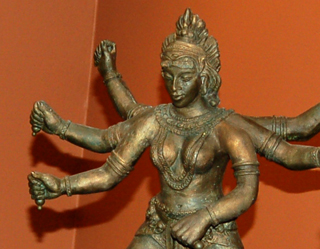
Twilight Time's Blu-ray of The Golden Voyage of Sinbad is a new Sony HD transfer that does a virtual rescue job on the picture. Original theatrical prints in 1974 were miserable, lifeless and smeary green, making us realize how much we missed the Technicolor hues of several of Harryhausen's earlier efforts. The good news is that the new transfer brings out color and sharpness we never thought possible, making many previously 'blah' scenes pop to life -- we can finally see attractive design and color values. Although grain is present it is much diminished; and at the higher resolution even the matte lines look less offensive. With the exception of a few set piece scenes and Miklós Rózsa's music score (auditable on an Isolated Score Track), I'd never thought Golden Voyage to be much worth watching; now it's much more enjoyable, even with the "Tie up your camel!" jokes. Twilight Time's extras include featurettes on three earlier Harryhausen pictures (see below), an original trailer and Julie Kirgo's liner notes. In a move that should make Harryhausen fans happy, Twilight Time has limited online sales of both this and Eye of the Tiger to one copy per customer, down from three. It'll be more difficult for scalpers to buy up multiple copies of the 3,000-unit limited edition and resell them at inflated prices. The review illustrations, by the way, were taken by the author when invited to observe the unpacking of Ray Harryhausen's display miniatures for a special exhibition at the Academy of Motion Picture Arts and Sciences in May of 2010. In the first photo Randall William Cook is doing the unpacking. A close associate of Mr. Harryhausen and a credentialed stop-motion artist in his own right, Randy was the 'authorized puppet wrangler' to receive the exhibits. I watched him re-glue tiny parts of the Eye of the Tiger baboon back together in the archivist's workroom.
|
|
Sinbad and the Eye of the Tiger is a tougher review proposition than Golden Voyage. Odd feelings pop up when one criticizes the work of truly legendary filmmaker. Is it really necessary to poke sharp sticks at a genius when he's down? Who nominated me to second-guess the work of a great artist? Eye of the Tiger may indeed be the nadir of Harryhausen's films. It's neither magical nor particularly exciting, and except for Ray's input, the attitude toward most of the movie seems to be 'whatever'. The screenplay, this time by Harryhausen's longtime associate Beverley Cross (Jason and the Argonauts) is a dull repeat -- the curse of the sorceress Zenobia (Margaret Whiting) has transformed the heir to a throne into a baboon, and Sinbad helps the baboon's sweetheart Farah (Jane Seymour) search for the magical antidote to return him to human form. As Sinbad, Patrick Wayne is neither bad nor good -- he makes no impression at all. We remember his earring more than we do his face. 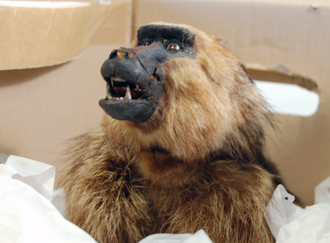
Tyrone's daughter Taryn Power has a bright smile to enliven things a bit, but the ensemble drags when Sinbad has to bring along Melanthius (Patrick Troughton), a combo Merlin/exposition resource. In a first for a Harryhausen fantasy, we get a sunbathing scene with the two female leads -- interrupted, naturally, by a curious animated monster. In 1977 through 1980 or so the Production Code was pretty permissive with brief nudity in a non-sexual context; Eye of the Tiger was rated "G". Some of the monsters are even more derivative than before, especially a trio of sword-fighting phantoms that look like morphs between the 7th Voyage skeleton and Selenites from First Men In the Moon. And we also get a giant walrus, who serves as little more than decoration and behaves more or less like the Archelon from One Million Years, B.C. 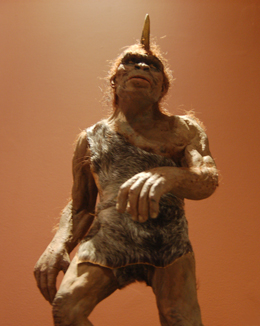
It was friend Randy Cook who turned me around on this one, with the advice to just stop critiquing the movie and enjoy the animation. We had met in 1970 doing just that with the dramatically challenged The Valley of Gwangi, which is a joy to watch just to experience Ray's dynamic dinosaurs. Properly chastised and looking at Eye of the Tiger again, I better appreciated the fact that there's a lot of animation in there and that much of it involves the Troglodyte and the baboon in close proximity to live-action characters. I had originally thought, why use Dynamation for animals like the baboon and the tiger, when they are never going to pass for the real thing? Although the tiger moves well enough, it still looks like a stuffed toy. On the other hand, the animation of the baboon is so careful and delicate that it becomes one of Harryhausen's more impressive illusions. Given almost equal emphasis is the Troglodyte, a proto-man who happens to be about 13 feet tall. Harryhausen manages to give this caveman with a horn on his forehead a real personality, and a number of expressive facial reactions. The Troglodyte is also a 'good guy' monster, so it's something of a letdown when the story lets him bite the dust in the last scene. 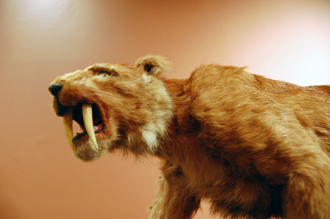
The final word is that Sinbad and the Eye of the Tiger it is no gem, yet remains a fine showcase of Ray Harryhausen's skills. Ray seemed to be looking for at least one new artistic challenge per picture. Twilight Time's Blu-ray of Sinbad and the Eye of the Tiger is also a Sony digital optimization of a show loaded with opticals, duped footage and color that is tricky to time for photochemical film prints. This show never looked bad yet is now in even brighter shape (although nothing can fix the ugly main title sequence, printed over the first scene to keep the 105-minute picture as short as possible). Composer Roy Budd is no Miklós Rózsa but his music helps the film maintain some energy. It can be heard on an Isolated Score Track. The extras on Eye of the Tiger are limited to the old This is Dynamation featurette, and an original trailer.
On a scale of Excellent, Good, Fair, and Poor,
Reviews on the Savant main site have additional credits information and are often updated and annotated with reader input and graphics. Also, don't forget the 2011 Savant Wish List. T'was Ever Thus.
Review Staff | About DVD Talk | Newsletter Subscribe | Join DVD Talk Forum |
| ||||||||||||||||||||||||